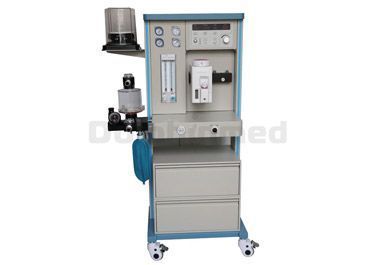Application and development of Portable Anesthesia Machine
Portable Anesthesia Machine is mainly used for off-campus applications such as field operations, disaster relief, and emergency operations. Due to the different environments used, the portable anesthesia machine and the conventional anesthesia machine are more prominent and portable, and on the basis of this principle, the intelligent integration and multi-functionality is expanded.
The structure required for a portable anesthesia machine: an anesthetic vaporizer, a respiratory support system, and a breathing circuit. As one of the core components of the anesthesia machine, the volatile tank should ensure the anesthetic gas has a precise volatile concentration when releasing the anesthetic, and can control the depth of anesthesia. The breathing circuit provides respiratory support to the patient under anesthesia, including oxygen mixing of anesthetic gas, exchange of exhaled gas and anesthetic gas, exhalation of carbon dioxide gas, and switching of manual machine state. In short, the basic components of a portable anesthesia machine is similar to that of a general anesthesia machine, but the design is more compact.
Portable Anesthesia Machine
What are the characteristics of a portable anesthesia machine: lightweight and portable. Functional units tend to be small, integrated, and modular. Low power consumption: In the case of limited power and limited origin, limited resources should be used to the maximum extent. Rugged structure: It is dust-proof and moisture-proof, and it is used in various harsh environments. In addition, the users of the portable anesthesia machine are not necessarily professional anesthesiologists, so it is best to design an "emergency automatic control" working mode for emergency use and emergency use by personnel who do not have knowledge of operating the ventilator.
For the choice of Anesthesia Workstation Manufacturer, if you want to judge whether it is good or not, you should also know about the equipment. What kind of equipment can the manufacturer produce, and what are the specific functions of the equipment? If we can learn more about the information, we can make further choices. The function of the equipment is more advanced and more stable, and naturally, it can meet our needs, so each person must take into account these actual situations when making choices.
Troubleshooting Ce Anesthesia Machine:
1. The domestic Ce Anesthesia Machine has a leaking sound, which may be due to a broken pipe or loose joints, and there are warnings such as Pressure Low and Peak Low or no warning. In general, when you hear a leak, mainly a leak in a high-pressure part (such as a central gas supply fitting or gas supply to the main switch of the machine), you can check the piping or fittings in the relevant part. Because the leaking part is mainly medical gas (air) and oxygen, if the domestic anesthesia machine can not be eliminated in time, it is appropriate to follow the situation on the spot, and then repair or replace the machine after the patient is finished.
2. When the test airbag drops, it may be because of the breathing circuit leaks. It is recommended to check the domestic anesthesia machine to clean the pressure relief valve, re-adjust the position, or replace the pressure relief valve and the breathing airbag group.
3. The respirator cannot correctly determine the position of the Bag/Vent switch. The possible cause is that the respirator or carbon dioxide absorber is faulty. It should be changed to manual breathing and contact the maintenance personnel for maintenance.
4. There is a large amount of air leakage in the breathing circuit (manual mode). The possible reason is that the manual ball is not connected properly, or the sodium-lime absorption tank is not properly installed. It is recommended to confirm that the manual ball connection is properly connected or reinstall the sodium-lime absorption tank.
5. Domestic ce anesthesia machine power supply often loses power when power is off. The possible reason is that the load connected to the power output device is too large. It is recommended to check whether the power output device is short-circuited or used in a distributed outlet.






 English
English  French
French  Chinese
Chinese  Spanish
Spanish 















